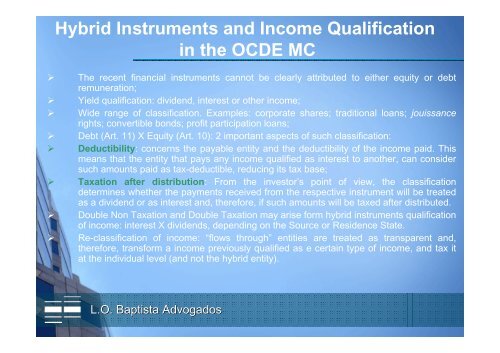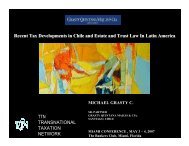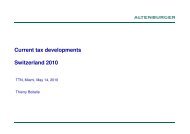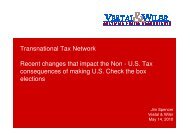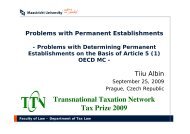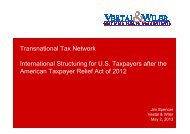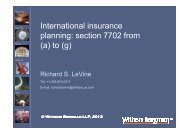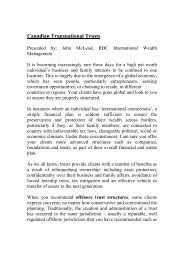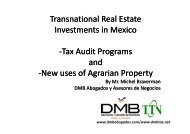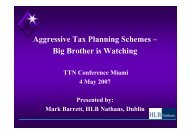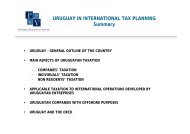Hybrid Entities
Hybrid Entities
Hybrid Entities
Create successful ePaper yourself
Turn your PDF publications into a flip-book with our unique Google optimized e-Paper software.
<strong>Hybrid</strong> Instruments and Income Qualification<br />
in the OCDE MC<br />
‣ The recent financial instruments cannot be clearly attributed to either equity or debt<br />
remuneration;<br />
‣ Yield qualification: dividend, interest or other income;<br />
‣ Wide range of classification. Examples: corporate shares; traditional loans; jouissance<br />
rights; convertible bonds; profit participation loans;<br />
‣ Debt (Art. 11) X Equity (Art. 10): 2 important aspects of such classification:<br />
‣ Deductibility: concerns the payable entity and the deductibility of the income paid. This<br />
means that the entity that pays any income qualified as interest to another, can consider<br />
such amounts paid as tax-deductible, reducing its tax base;<br />
‣ Taxation after distribution: From the investor’s point of view, the classification<br />
determines whether the payments received from the respective instrument will be treated<br />
as a dividend or as interest and, therefore, if such amounts will be taxed after distributed.<br />
‣ Double Non Taxation and Double Taxation may arise form hybrid instruments qualification<br />
of income: interest X dividends, depending on the Source or Residence State.<br />
‣ Re-classification of income: “flows through” entities are treated as transparent and,<br />
therefore, transform a income previously qualified as e certain type of income, and tax it<br />
at the individual level (and not the hybrid entity).<br />
L.O. Baptista Advogados


